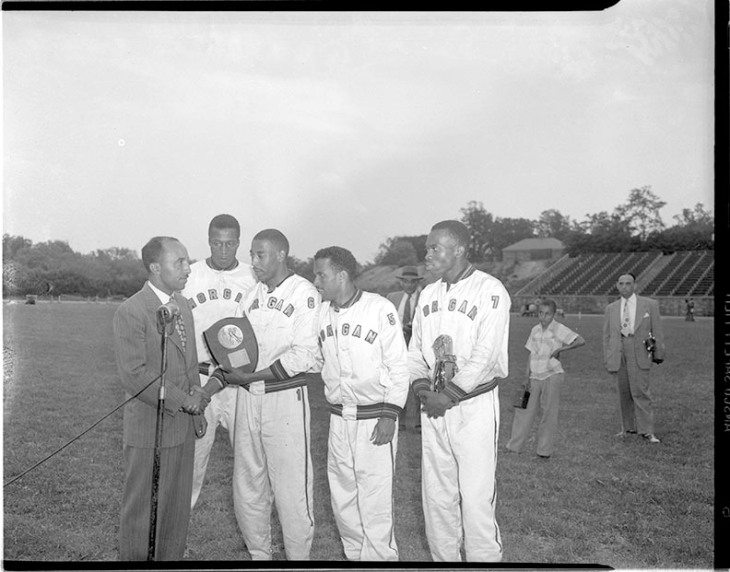Before Baltimore native Thurgood Marshall (1908–1993) became the first African American U.S. Supreme Court justice, he was a lawyer directing legal operations for the NAACP from 1940 to 1961. Known for many of his great accomplishments during the struggle for civil rights, his most noted are the Murray v. Pearson (1936) and Brown v. Board of Education of Topeka (1954). In the former case, Marshall, along with Charles Hamilton Houston broke the walls of segregation in 1935 when they secured the admission of Donald Gaines Murray to the University of Maryland School of Law, which before then denied admission to African Americans. The former and most well-known Marshall case was a landmark decision that decreed separate public schools for African American and white students was unconstitutional in 1954.
Image information:
Thurgood Marshall receiving NAACP lifetime membership plaque from Carl Murphy [editor of the Afro-American newspaper]
Baltimore, Maryland
circa 1956
4 in. x 5 in. acetate negative
Paul Henderson Photograph Collection, HEN.00.A2-148
Maryland Historical Society




